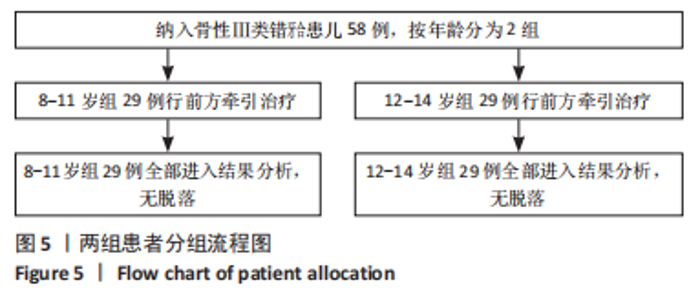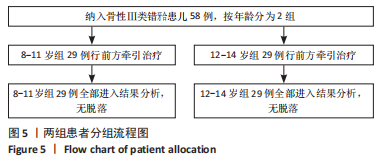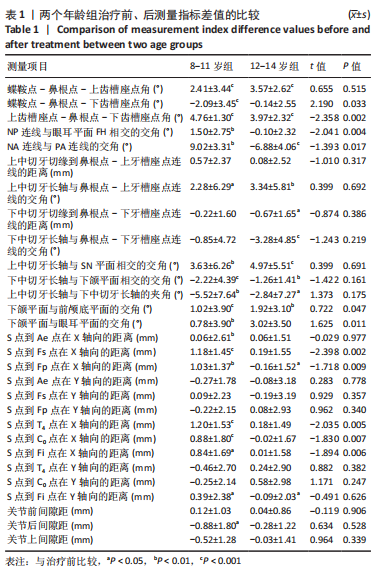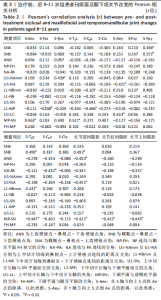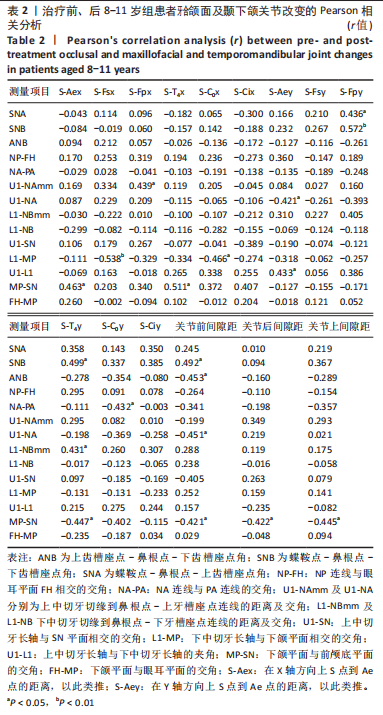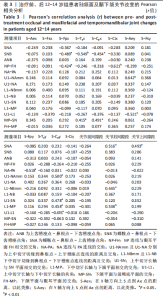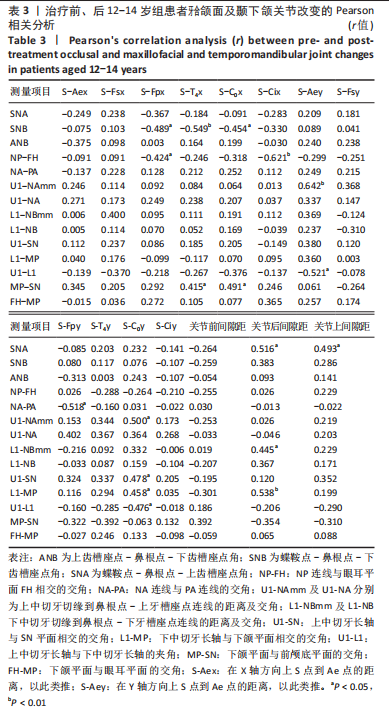[1] 任超超,白玉兴.上颌前方牵引的疗效及其长期稳定性[J].中华口腔医学杂志,2018,53(10):649-652.
[2] ALBAJALAN OB, ALAZZAWI NO, MUKTI NA, et al. The Relationship between Sex and Age on Dental Arch Change after Treatment with the Reverse Pull Face Mask Appliance of Class III Malocclusion: a Randomized Clinical Trial. J Int Dent Med Res. 2020;13(2):669-673.
[3] 刘亚非,王雅淋,左艳萍,等.X射线测量青少年骨性Ⅲ类患者前方牵引治疗后颞下颌关节结构的改变[J].中国组织工程研究,2021, 25(8):1154-1159.
[4] HUANG X, CEN X, LIU J. Effect of protraction facemask on the temporomandibular joint: a systematic review. BMC Oral Health. 2018; 18(1):38.
[5] SILVA AJ, ARELLANO RC, AGUILERA MV, et al. Temporomandibular disorders in growing patients after treatment of class II and III malocclusion with orthopaedic appliances: a systematic review. Acta Odontol Scand. 2018;76(4):262-273.
[6] CAN FSO, TURKKAHRAMAN H. Effects of Rapid Maxillary Expansion and Facemask Therapy on the Soft Tissue Profiles of Class III Patients at Different Growth Stages. Eur J Dent. 2019;13(2):143-149.
[7] WOON SC, THIRUVENKATACHARI B. Early orthodontic treatment for Class III malocclusion: A systematic review and meta-analysis. Am J Orthod Dentofacial Orthop. 2017;151(1):28-52.
[8] INNOCENTI C, GIUNTINI V, DEFRAIA E, et al. Glenoid fossa position in Class III malocclusion associated with mandibular protrusion. Am J Orthod Dentofacial Orthop. 2009;135(4):438-441.
[9] LEE H, SON WS, KWAK C, et al. Three-dimensional changes in the temporomadibular joint after maxillary protraction in children with skeletal class Ⅲ malocclusion. J Oral Sci. 2016;58(4):501-508.
[10] YATABE M, GARIB D, FACO R, et al. Mandibular and glenoid fossa changes after bone- anchor -ed maxillary protraction therapy in patients with UCLP:A 3-D preliminary assess-ment. Angle Orthod. 2017;87(3):423-431.
[11] 李菁,舒维娜,刘海鹏,等.TMD患者前牙咬合型与颞下颌关节的CBCT测量分析[J].口腔医学研究,2018,34(3):290-293.
[12] HUQH MZ, HASSAN R, RAHMAN RA, et al. The Short-Term Effect of Active Skeletonized Sutural Distractor Appliance on Temporomandibular Joint Morphology of Class III Malocclusion Subjects. Eur J Dent. 2021; 15(3):523-532.
[13] CHAE JM, PARK JH, TAI K, et al. Evaluation of condyle-fossa relationships in adolescents with various skeletal patterns using cone-beam computed tomography. Angle Orthod. 2020;90(2):224-232.
[14] EI H, CIGER S. Effects of 2 types of facemask on condylar position. Am J Orthod Dentofacial Orthop. 2008;137(6):801-808.
[15] RADEJ I, SZARMACH I. The role of maxillofacial structure on condylar displacement in maximum intercuspation and centric relation. Biomed Res Int. 2022;2022:1439203.
[16] LEE Y, HONG I, AN J. Anterior joint space narrowing in patients with temporomandibular disorder. J Orofac Orthop. 2019;80(3):116-127.
[17] DYGAS S, SZARMACH I, RADEJ I. Assessment of the Morphology and Degenerative Changes in the Temporomandibular Joint Using CBCT according to the Orthodontic Approach: A Scoping Review. Biomed Res Int. 2022:6863014.
[18] GONG A, LI J. Computed tomography study of temporomandibular joint structural alterations in patients with skeletal class III malocclusion following maxillary protraction therapy in mixed dentition. Stomatology. 2014;34(3):164-166.
[19] YAO S, ZHANG QH, LIU XJ. Changes of TMJ space of class III malocclusion complicated with TMD after treatment. Chin J Prosthodont. 2001;2(1):2-4.
[20] 王青青,曹正飞,关慧娟,等.颞下颌关节盘前移位同颅面矢状向发育间关系的临床研究[J].实用口腔医学杂志,2020,36(4):647-651.
[21] NGAN PW, YIU C, HAGG U, et al. Masticatory muscle pain before,during, and after treatment with orthopedic protraction headgear: a pilotstudy. Angle Orthod. 1997;67(6):433-437.
[22] KURT H, ALIOĞLU C, KARAYAZGAN B, et al. The effects of two methods of class III malocclusion treatment on temporomandibular disorders. Eur J Orthod. 2011;33(6):636-641.
|
